Child Neglect
Child neglect occurs when a parent or guardian fails to provide a child with adequate food, shelter, protection from environmental hazards, or other conditions necessary for normal growth or development. Whereas sexual abuse occurs equally in all socioeconomic groups and physical abuse is weakly associated with lower socioeconomic status, child neglect is strongly associated with poverty, lack of education, and teen-aged parenthood.
Neglect can take many forms. Terminology varies from state to state, but the following categories are recognized by Child Protective Services in Texas:
- Physical neglect (ie, failure to provide food or other basic care); this category includes nutritional neglect, also known as "non-organic failure to thrive"
- Neglectful supervision
- Medical neglect
- Psychological neglect
- Educational neglect
- Child abandonment
- Failure to protect a child from dangerous environments or physical or sexual abuse
Neglect in one or more of the above forms accounts for about 70% of all cases of abuse and neglect validated by Child Protective Services in the US.
Some examples from validated child neglect investigations are depicted below:

Fig. 36: A filthy home environment such as depicted here is a clear risk to the health and safety of children residing here. The parent in such a situation is usually found to have a severe untreated mental or physical illness, or a severe substance dependency.
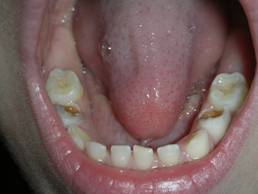
Fig. 37: Severe dental caries are often ignored by parents ("they're just baby teeth") but can lead to dental abscesses, chronic mouth pain, and even failure to thrive. If a parent does not obtain dental care for widespread caries after it is pointed out on examination, or if a child experiences complications from untreated caries, then a report should be made to Child Protective Services.
The remainder of this section will focus on nutritional neglect, which is probably the most common presentation of neglect in primary-care offices.
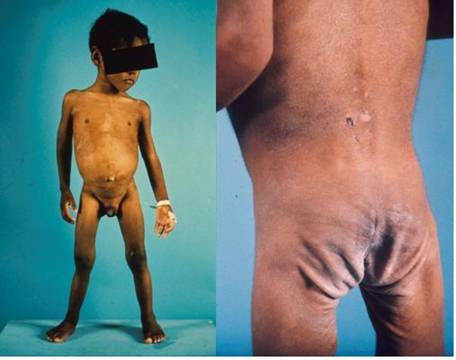
Figs. 38 & 39: Severe neglect in a preschool child. Note the markedly decreased subcutaneous tissue. There is also a leg length discrepancy due to an untreated right femur fracture. A skeletal survey should be obtained in young severely neglected children, due to the high risk of accompanying physical abuse.
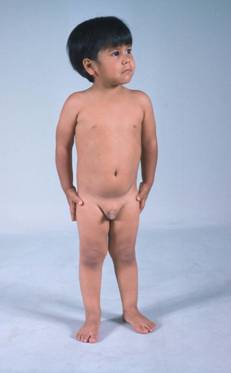
Fig. 40: The same child after nutritional rehabilitation and placement in a caring foster home.
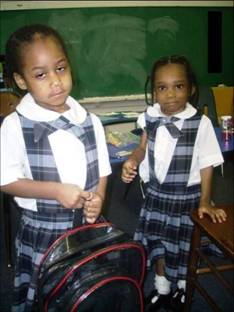
Figure 41. The child in the background is actually a year older than her 3 year old sibling in the foreground. The older child was systematically starved by a foster parent who secretly only wanted to adopt the younger child. She recovered rapidly in a nurturing environment.
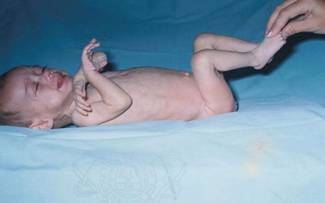
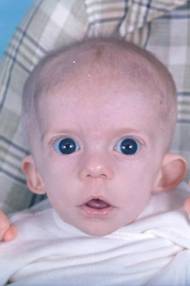
Figs. 42 & 43: Severe and prolonged malnutrition due to neglect. Note the characteristic gaunt, hypervigilant facial appearance.